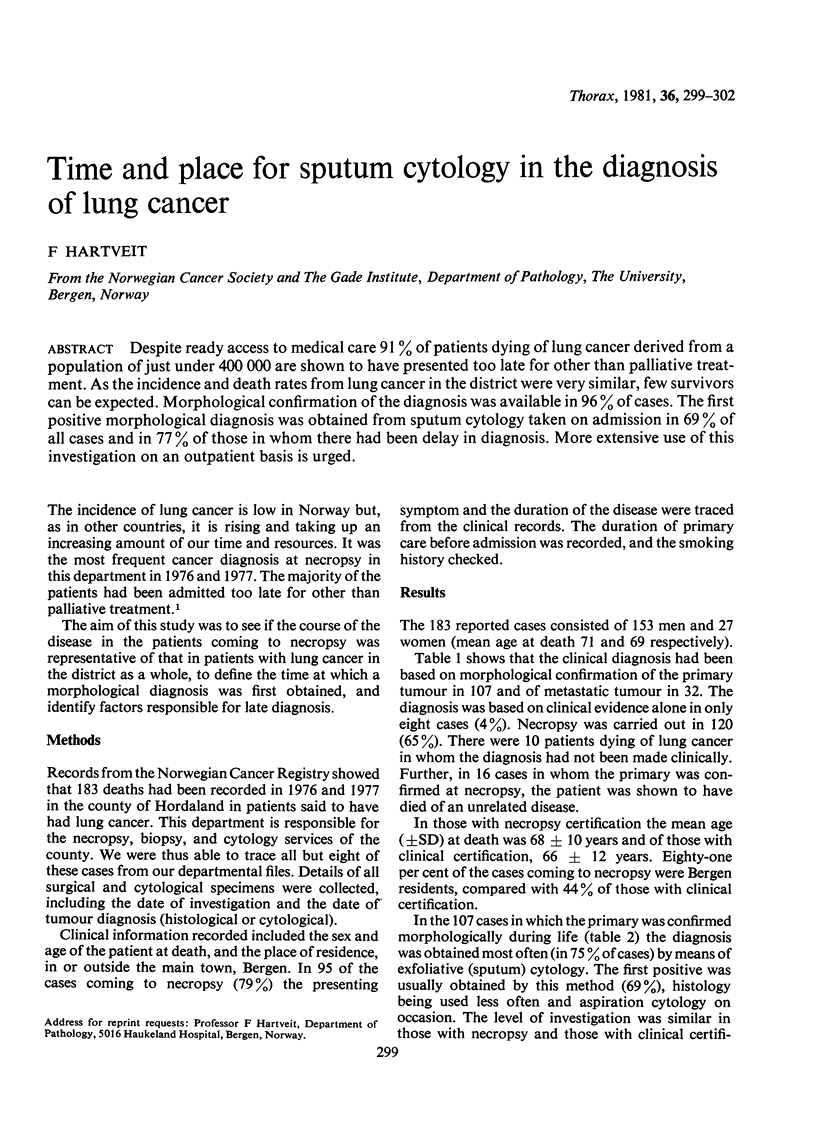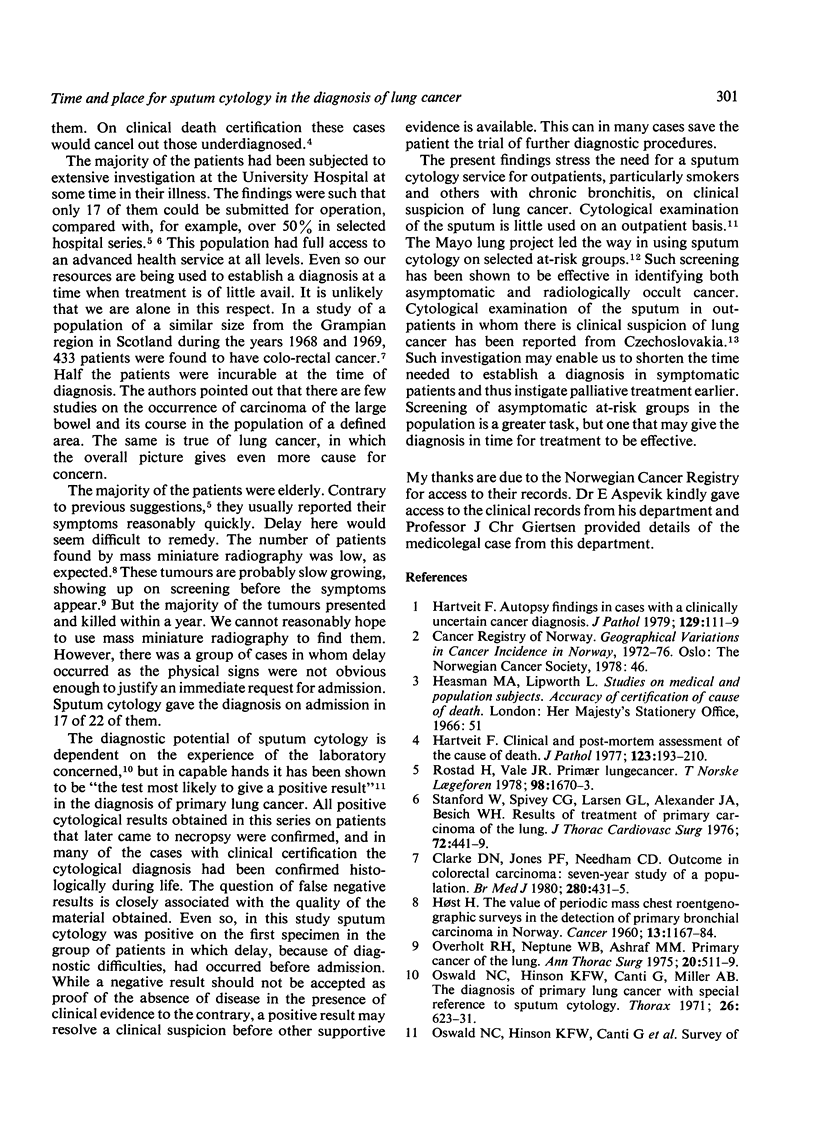Abstract
Despite ready access to medical care 91% of patients dying of lung cancer derived from a population of just under 400 000 are shown to have presented too late for other than palliative treatment. As the incidence and death rates from lung cancer in the district were very similar, few survivors can be expected. Morphological confirmation of the diagnosis was available in 96% of cases. The first positive morphological diagnosis was obtained from sputum cytology taken on admission in 69% of all cases and in 77% of those in whom there had been delay in diagnosis. More extensive use of this investigation on an outpatient basis is urged.
Full text
PDF



Selected References
These references are in PubMed. This may not be the complete list of references from this article.
- Clarke D. N., Jones P. F., Needham C. D. Outcome in colorectal carcinoma: seven-year study of a population. Br Med J. 1980 Feb 16;280(6212):431–435. doi: 10.1136/bmj.280.6212.431. [DOI] [PMC free article] [PubMed] [Google Scholar]
- Fontana R. S., Sanderson D. R., Woolner L. B., Miller W. E., Bernatz P. E., Payne W. S., Taylor W. F. The Mayo Lung Project for early detection and localization of bronchogenic carcinoma: a status report. Chest. 1975 May;67(5):511–522. doi: 10.1378/chest.67.5.511. [DOI] [PubMed] [Google Scholar]
- HOST H. The value of periodic mass chest roentgenographic surveys in the detection of primary bronchial carcinoma in Norway. Cancer. 1960 Nov-Dec;13:1167–1184. doi: 10.1002/1097-0142(196011/12)13:6<1167::aid-cncr2820130604>3.0.co;2-o. [DOI] [PubMed] [Google Scholar]
- Hartveit F. Autopsy findings in cases with a clinically uncertain cancer diagnosis. J Pathol. 1979 Nov;129(3):111–119. doi: 10.1002/path.1711290302. [DOI] [PubMed] [Google Scholar]
- Hartveit F. Clinical and post-mortem assessment of the cause of death. J Pathol. 1977 Dec;123(4):193–210. doi: 10.1002/path.1711230402. [DOI] [PubMed] [Google Scholar]
- Oswald N. C., Hinson K. F., Canti G., Husain O. A., Girling D. J., Tall R., Stephens R. J., Fox W. Survey of the sputum cytology service in England and Wales. Thorax. 1975 Oct;30(5):489–496. doi: 10.1136/thx.30.5.489. [DOI] [PMC free article] [PubMed] [Google Scholar]
- Oswald N. C., Hinson K. F., Canti G., Miller A. B. The diagnosis of primary lung cancer with special reference to sputum cytology. Thorax. 1971 Nov;26(6):623–627. doi: 10.1136/thx.26.6.623. [DOI] [PMC free article] [PubMed] [Google Scholar]
- Overholt R. H., Neptune W. B., Ashraf M. M. Primary cancer of the lung. A 42-year experience. Ann Thorac Surg. 1975 Nov;20(5):511–519. doi: 10.1016/s0003-4975(10)64250-6. [DOI] [PubMed] [Google Scholar]
- Rostad H., Vale J. R. Primaer lungecancer. En retrospektiv undersøkelse. Tidsskr Nor Laegeforen. 1978 Nov 30;98(33):1670–1673. [PubMed] [Google Scholar]
- Stanford W., Spivey C. G., Jr, Larsen G. L., Alexander J. A., Besich W. J. Results of treatment of primary carcinoma of the lung. Analysis of 3,000 cases. J Thorac Cardiovasc Surg. 1976 Sep;72(3):441–449. [PubMed] [Google Scholar]


